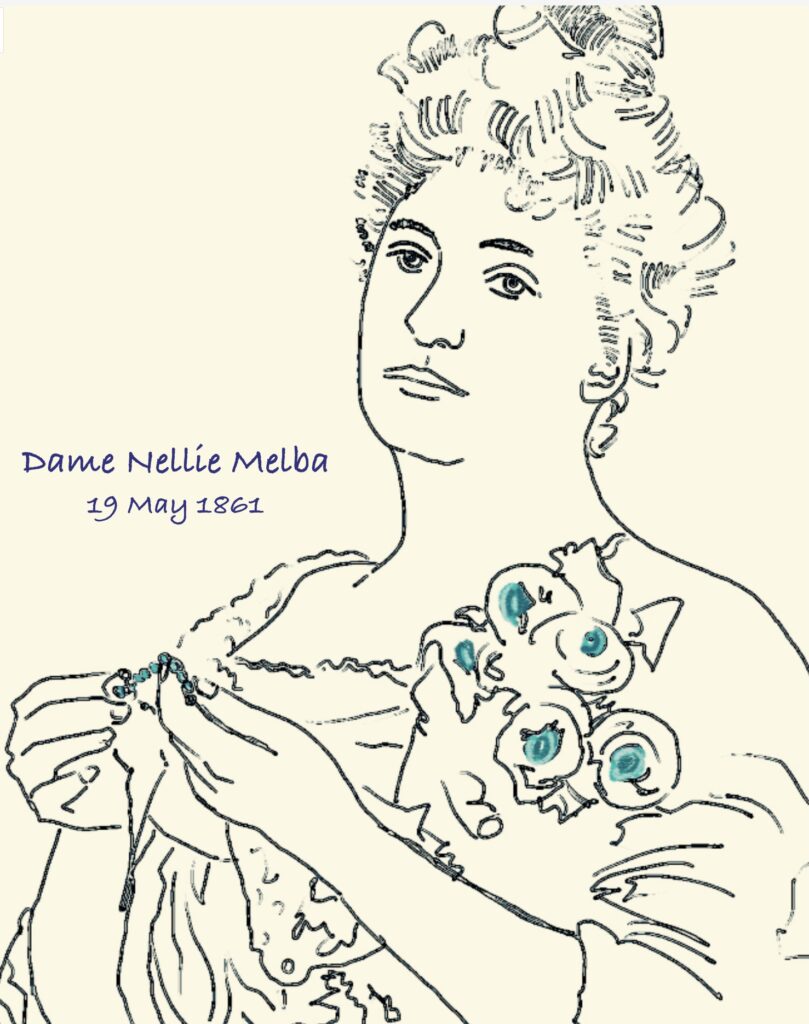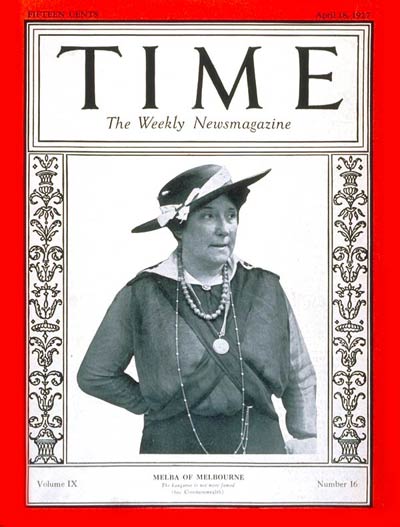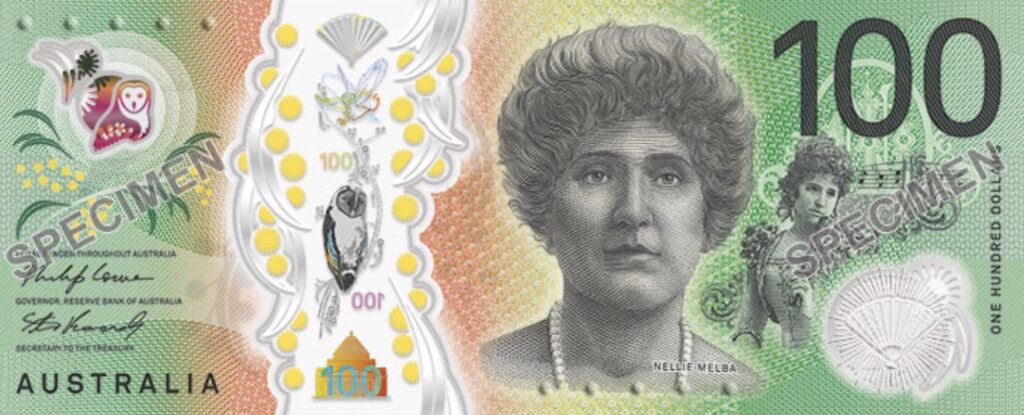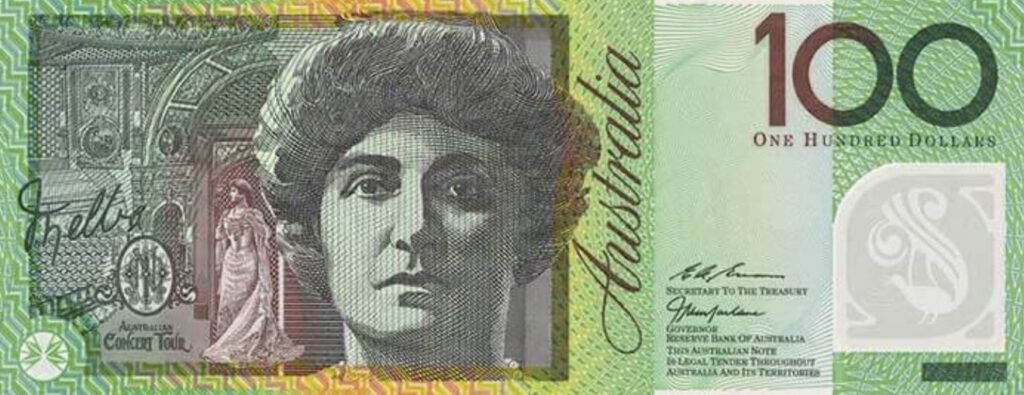DAME NELLIE MELBA
SOPRANO
MAY 19TH, 1861

The famous Nellie Melba, who was born in 1861, was a woman on a mission. After a modest start to her career as a lyric coloratura soprano in her home town of Melbourne Australia, she packed herself off in 1886 to pursue her career in London.
She made little impact there, and so sought her luck in Paris, where she studied with the leading teacher MATHILDE MARCHESI, who instantly recognised the young singer’s potential, reportedly exclaiming, “J’ai enfin une étoile!” (“I have a star at last!”)(1). Melba made such swift progress that she was allowed to sing the “Mad Scene” from AMBROISE THOMAS‘s HAMLET at a matinée musicale in Marchesi’s house in December the same year, in the presence of the composer himself (2).
The young singer’s talent was so evident that, after less than a year training with Marchesi, the impresario MAURICE STRAKOSCH gave her a ten-year contract at 1000 francs annually. After she had signed, she received a far better offer of 3000 francs per month from the Théâtre de LA MONNAIE, Brussels. She was prevented from breaking her contract by an injunction, but eventually fate stepped in, in the form of the impresario’s death which paved the way for her to being able to accept it. She made her operatic debut in Brussels in the role of Gilda on 13 October 1887.
It wasn’t long before she had established herself in France, despite not singing with the greatest of French diction! But nothing seemed to get in her way as a performer. Even the composer DELIBES was said to have declared, that he did not care whether she sang in French, Italian, German, English or Chinese, as long as she sang, such was her appeal as a performer.
Returning to London to make her debut at Covent Garden, it didn’t take long before she packed her bags, vowing never to ever come back after a lukewarm warm reception from the critics and only the offer of a derisory smaller role to follow. Due to the timely intervention of Lady de Grey, Melba found a strong advocate whose influence at Covent Garden was decisive, and Melba was persuaded to return and indeed to great critical success in the title role of Juliette in Gounod’s opera Roméo et Juliette. That night in June 1898 with her leading man Jean de Reszke at her side, marked the beginning of her critical acclaim in London.
Later singing in the same role at the Metropolitan Opera in New York, her singing and performance were proclaimed a triumph and established her as the prima donna successor to Adelina Patti.
She campaigned in Britain to have further performances of Puccini’s La Boheme staged after she had personally studied the role with the composer himself. Apropos Puccini, it is interesting to note that it was Melba who encouraged him to go and see the play Madame Butterfly; no doubt seeing it as a possibility for another operatic piece (1)!
La Bohème’s subject matter was considered too plebeian by the Covent Garden management, but all was vindicated by the public enthusiasm for the piece and aided in its popularity by having Enrico Caruso sing Rodolfo to her Mimì.This performance for us in our time, fuels the imagination (3)…if only the recording techniques and cinematography were at today’s level in 1902!
She returned to Australia in her later years setting up a school which merged into the Melbourne Conservatorium of Music and is now known as the Melba Memorial Conservatorium of Music. In Australia she became famous for her numerous ‘ farewell performances’, giving rise to the expression ‘ More farewells than Dame Nellie Melba’, or ‘To do a Melba’.
Australians still love her memory, and her image has been immortalised on the $100 dollar Australian bank note (4). We also must mention the ubiquitous dessert, Peach Melba which was particularly popular in the 1960’s and first prepared for, and named after her. Not to mention Melba toast, a rusk like creation believed to be created for her, to have with soup by Chef Auguste Escoffier at the Savoy, when she was unwell in 1897 (5).
Apart from these culinary honours she was elevated to Dame Grand Cross of the British Empire in 1927 and has a marble bust where she is one of only two singers on the grand staircase of the ROYAL OPERA HOUSE, Covent Garden. The other singer being Adelina Patti.
Not only that – she was the first Australian to appear on the cover of Time magazine in 1927 (6).

© 2019, TIME USA, LLC. TIME MAGAZINE COVER FROM APRIL 18TH, 1927 (6)


© 2012-2024, ROYAL BANK OF AUSTRALIA $100 BNNK NOTE (4)